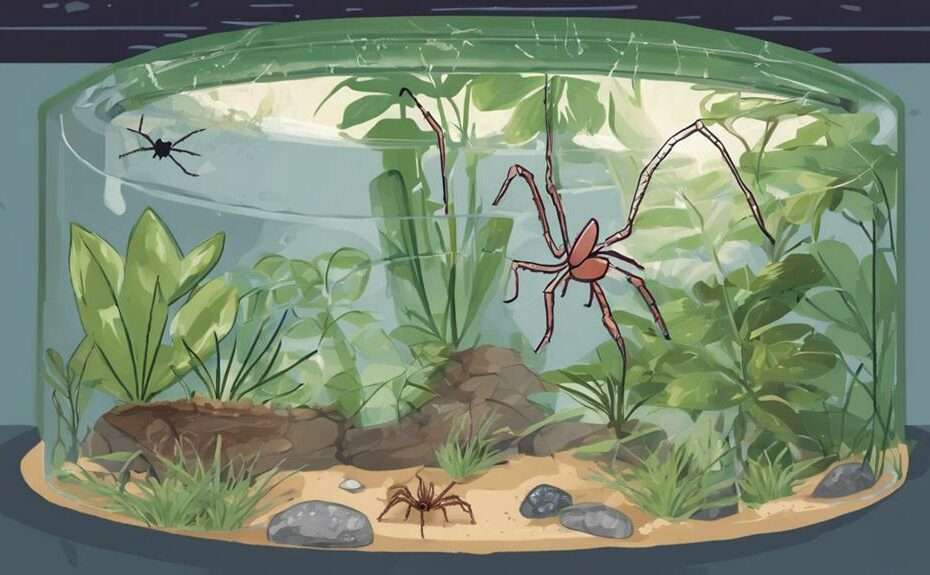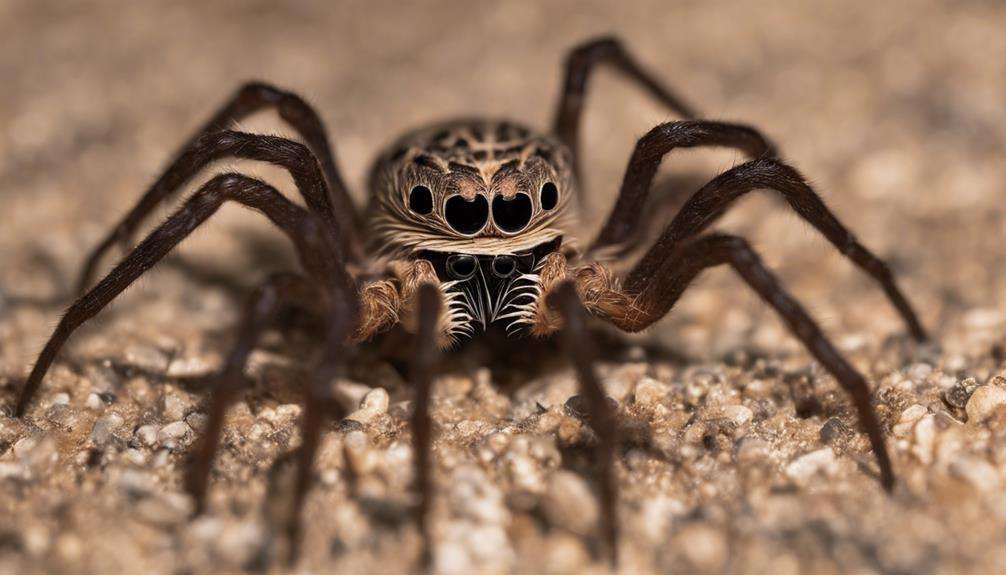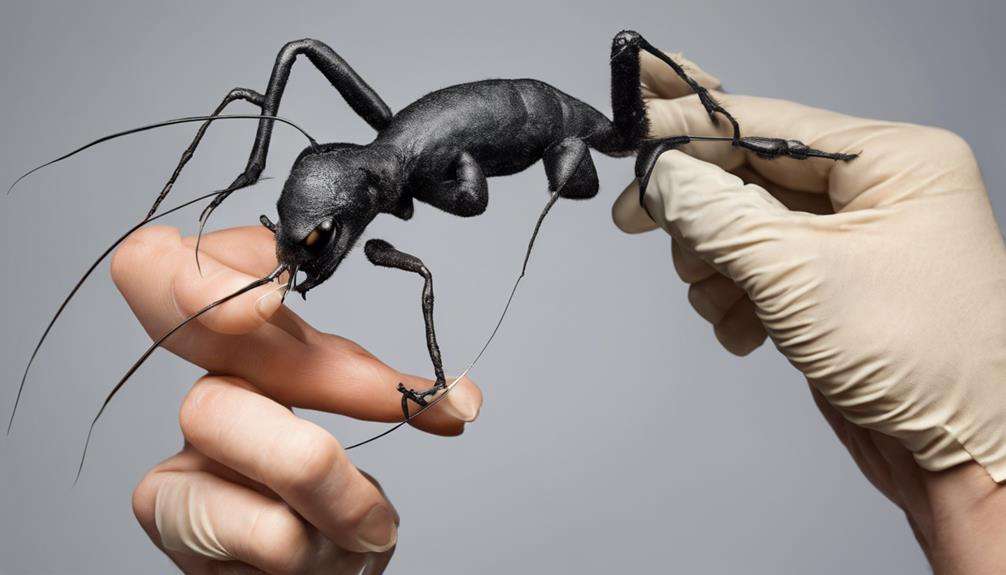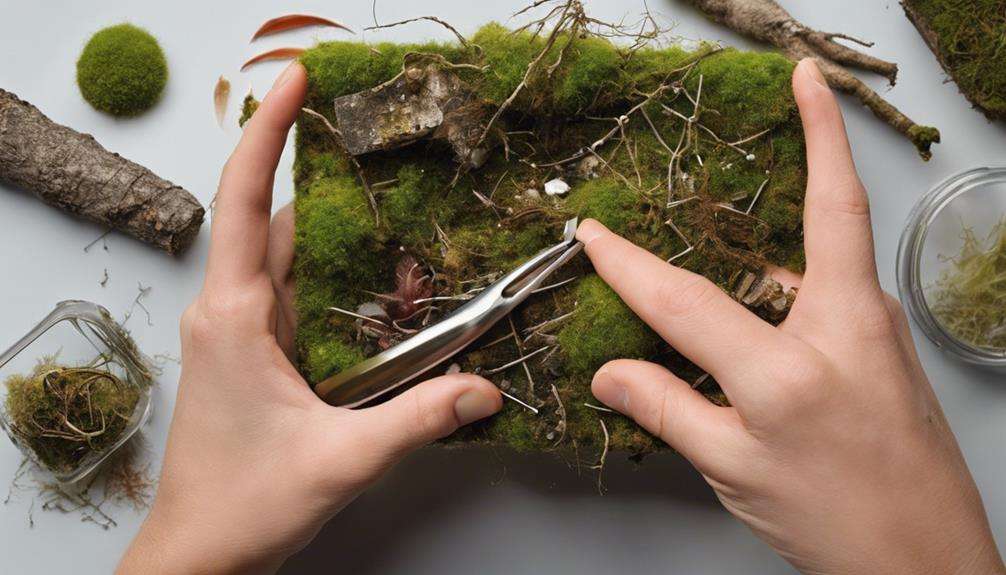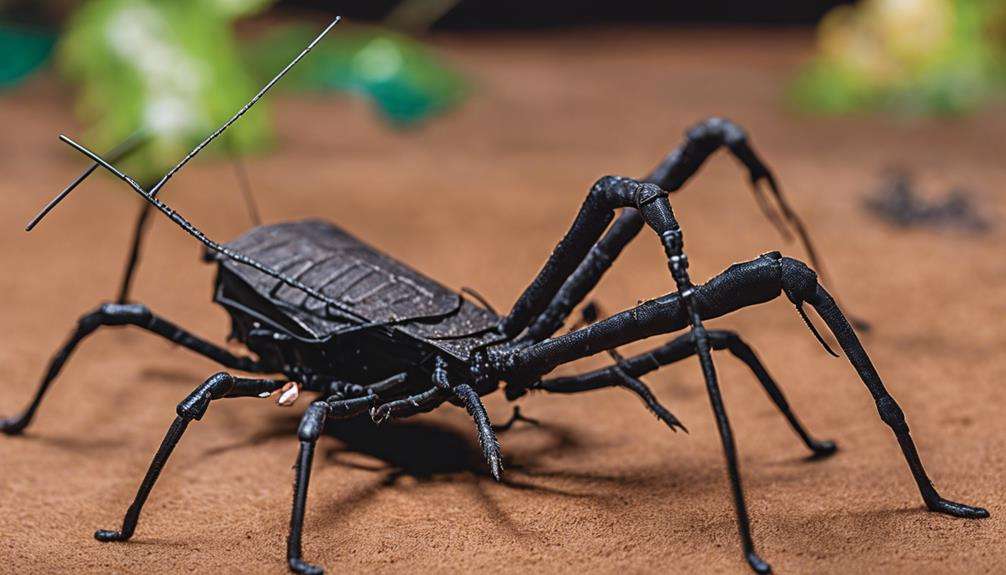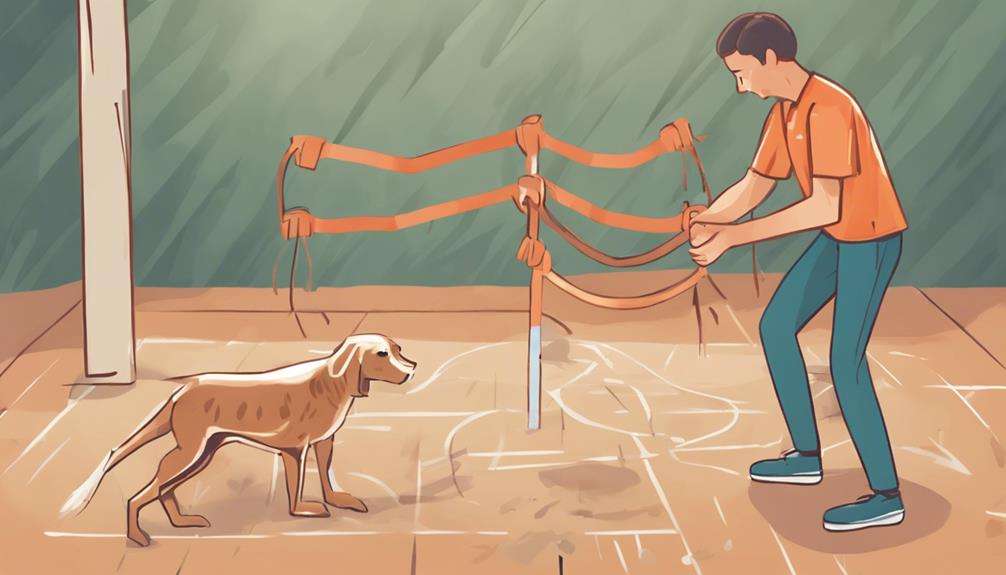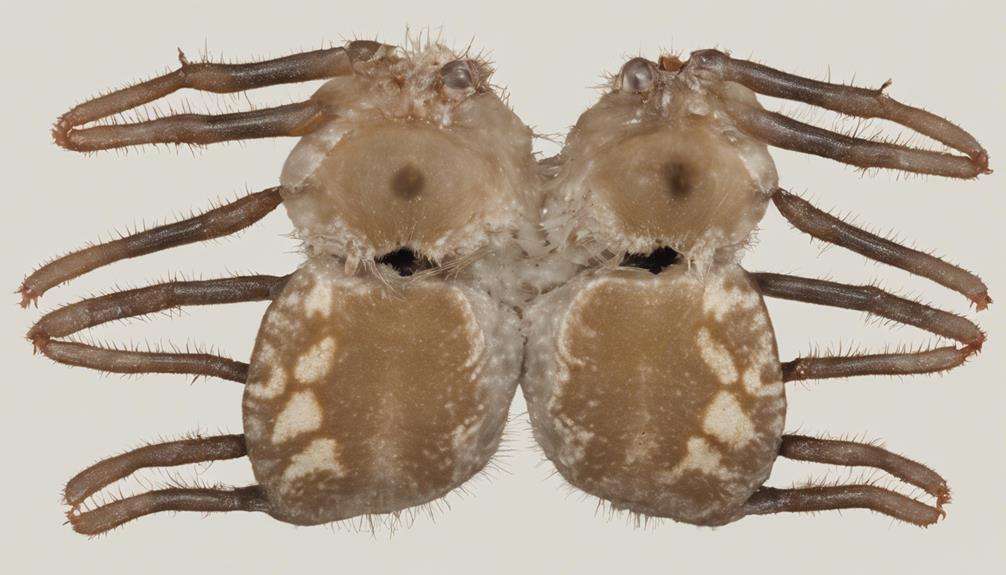Ever wondered how to create the perfect environment for your whip spider companion? With intricate care requirements and unique behaviors, these arachnids demand attention to detail. Imagine the satisfaction of seeing your pet thrive and grow under your attentive care.
But how can you ensure their well-being and happiness? Let's explore the top five whip spider care tips for pet owners, providing you with essential insights to elevate your pet parenting game.
Key Takeaways
- Provide tall, humid enclosures with proper substrate for whip spiders' well-being.
- Feed 2-3 varied prey items weekly to maintain health and vitality.
- Handle whip spiders gently, minimizing stress and ensuring their comfort.
- Monitor molting, health signs, and behavior closely for optimal care.
Housing and Enclosure Setup
For optimal care of your whip spider, ensure the housing and enclosure setup meets specific requirements to support their health and well-being.
Whip spiders need tall enclosures that are double the size of their adult leg span in length, width, and height to allow for comfortable movement.
It's essential to use proper substrate like moist coir to maintain high humidity levels of 70-80%, crucial for the well-being of whip spiders.
Creating microclimates with temperatures between 70-77°F helps support their health in captivity. Utilizing heat mats and regular misting can aid in achieving the necessary high humidity levels for whip spiders to thrive.
Additionally, providing a mesh top for ventilation is crucial in the enclosure setup to ensure proper airflow and to support molting.
Feeding and Nutrition Guidelines
To ensure the optimal health and well-being of your whip spider, it's essential to adhere to specific feeding and nutrition guidelines. Whip spiders should be fed 2-3 appropriately sized crickets or roaches weekly to maintain their health and nutrition.
It's important to adjust the prey size as needed based on the individual whip spider's appetite and size. Providing a varied diet is crucial as it helps ensure they receive essential nutrients for their overall well-being.
Proper feeding habits play a significant role in the longevity and vitality of whip spiders in captivity. Monitoring their feeding behavior is key, and adjusting the feeding schedule accordingly can contribute to their health.
Handling and Interaction Tips
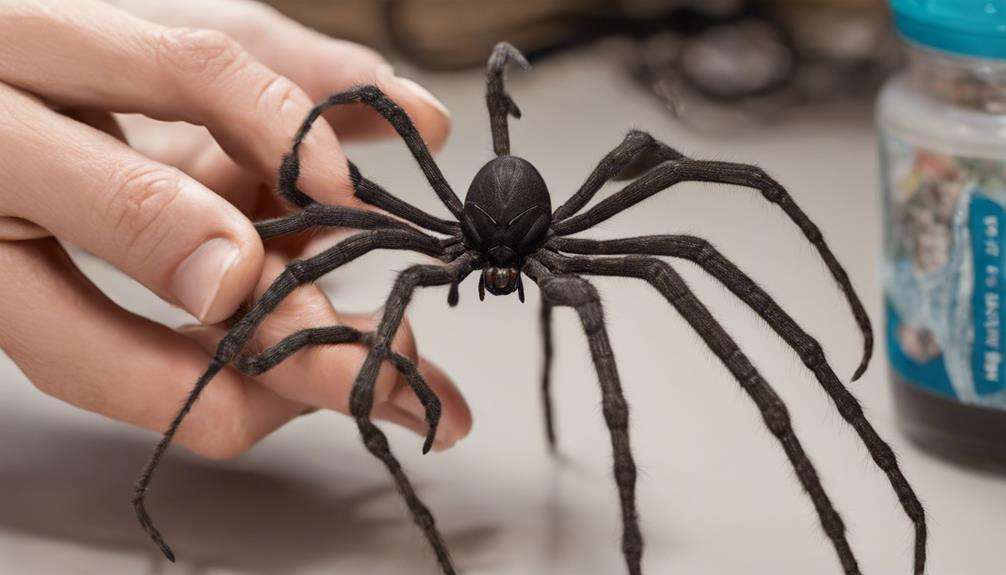
When handling whip spiders, ensure to approach them gently and use soft brushes or gentle tools for guidance rather than directly picking them up with your hands. Whip spiders are sensitive creatures, so minimal handling is key to avoid causing them stress or harm.
These arachnids may exhibit defensive behaviors if they feel threatened, so it's essential to be calm and avoid sudden movements or loud noises during interaction. Allow whip spiders to explore their environment at their own pace, respecting their need for space and privacy.
Molting Process Insights
As whip spiders undergo their molting process, it's important to understand the intricacies of this natural phenomenon to provide optimal care and support for your arachnid companion.
Here are some insights into the molting process:
- Vulnerability: Whip spiders are vulnerable to injury and stress during molting, necessitating a secure environment free from disturbances to ensure a successful process.
- Physical Changes: The molting process involves the swelling of the new exoskeleton, which then hardens and darkens over time, signaling the completion of the molting cycle.
- Molting Frequency: Juvenile whip spiders tend to molt more frequently than adults, who may only undergo this process once a year. Understanding your whip spider's molting frequency can help you anticipate and prepare for their needs during this critical time.
Health and Wellness Checkpoints
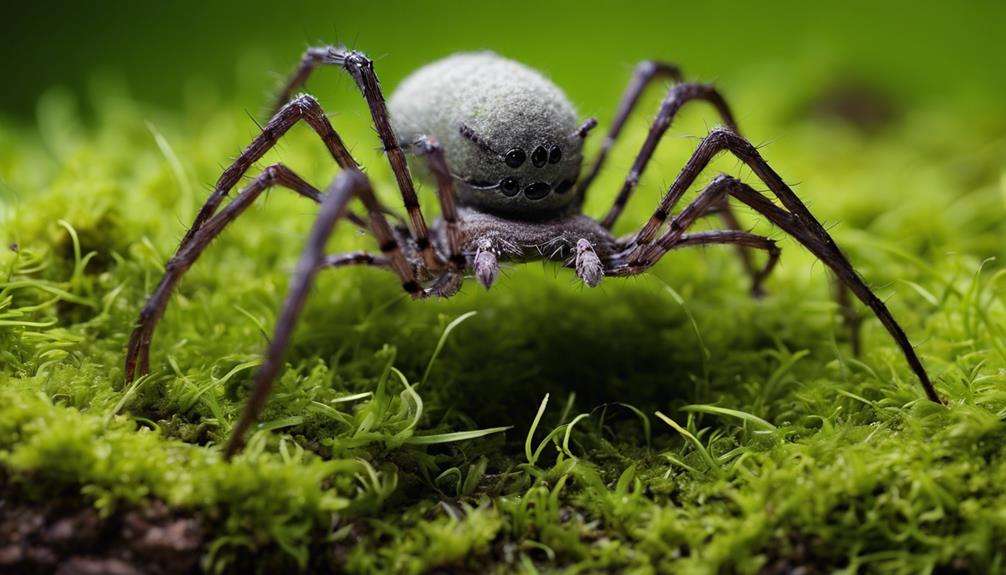
Regularly monitoring your whip spider's activity, eating habits, and molting frequency is essential to ensuring their health and wellness. Maintaining proper humidity levels between 70-80% is crucial to prevent dehydration and respiratory issues. Monitor your whip spider for stress indicators like excessive hiding, lack of appetite, or unusual behavior as these may signal underlying health concerns. Providing a proper diet with varied prey items is vital to meet their nutritional requirements for optimal health and energy levels.
To address hydration needs, always ensure a clean water source is available. If you notice any persistent health issues or abnormalities, seek veterinary care from an exotic animal specialist. Regular health check-ups can help in early detection and treatment of potential problems, ensuring your whip spider's well-being. By staying attentive to their needs and behavior, you can create a healthy and thriving environment for your unique arachnid companion.
Frequently Asked Questions
Can You Have a Whip Spider as a Pet?
You can have a whip spider as a pet in areas where legal restrictions do not apply. Ensure you meet their carnivorous feeding habits, handle them gently, understand their solitary social behavior, watch for health concerns, and provide suitable environmental enrichment.
How Long Do Whip Spiders Live?
So, you wanna know how long whip spiders live? In the wild, some species last 10-15 years. But with proper care like monitoring health and reducing stress, in captivity, they can live up to 20 years!
Are Tailless Whip Scorpions Easy to Care For?
Tailless whip scorpions are relatively easy to care for. They thrive in high humidity environments and require a suitable enclosure with proper ventilation. Monitoring humidity levels and providing a day/night cycle with appropriate lighting is essential.
What Is the Best Enclosure for a Whip Scorpion?
For a whip scorpion, the best enclosure would be a spacious glass terrarium or acrylic tank. Opt for vertical setups with mesh tops to allow airflow. Escaping is a concern, so ensure a secure habitat.
Conclusion
In conclusion, by following these five essential care tips for your pet whip spider, you can create a thriving environment for their well-being and longevity.
Remember to maintain a tall, ventilated enclosure with suitable substrates, provide a warm, humid microclimate, feed a proper diet, handle with care, and monitor their health and wellness regularly.
By incorporating these practices into your routine, you can ensure a happy and healthy life for your unique arachnid companion.
